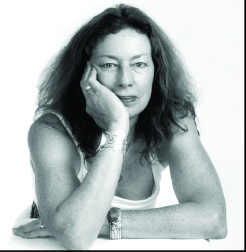Over the past four years, Turkish author Orhan Pamuk has become an expert on what pandemics teach us. The Nobel Prize winning author has been writing an historical novel set in 1901 during what is known as ‘the third plague.’ In a NYT article (April 24,2020) Pamuk wrote “it is about an outbreak of bubonic plague that killed millions of people in Asia but not very many in Europe. Over the last two months, friends and family, editors and journalists who know the subject of that novel, ‘Nights of Plague,’ have been asking me a barrage of questions about pandemics.” 
In comparing the current coronavirus pandemic with historical outbreaks of plague and cholera, Pamuk has found “an overabundance of similarities.” He’s discovered “what makes pandemics alike is not merely commonality of germs and viruses but that our initial responses were always the same. The initial response to the outbreak of a pandemic has always been denial. National and local governments have always been late to respond and have distorted facts and manipulated figures to deny the existence of the outbreak.”
Mirroring Pamuk’s findings regarding denial, last week, nearly half of the United States was seeing a viral surge of the disease, especially Florida, Arizona, Texas where aggressive reopening programs were underway. Following the President’s ill-conceived political rallies amid spiking infections in Oklahoma and Arizona, Dr. Fauci—America’s top health adviser—warned that if we don’t follow caution and slow the infection now, we’ll be soon be “chasing a wildfire.”
The big question on people’s minds today is: Are we experiencing the second wave? Or a long first wave? With summer’s arrival, people are increasingly impatient with current restrictions. According to National Geographic (June 15, 2020), “Researchers studying the coronavirus contend it is not a second wave that is striking nearly two dozen states these days with rising infections—but more of a continuation of a long first wave of a startling infectious enemy.” Alexis Madrigal, who tracks coronavirus data with the COVID Tracking Project at The Atlantic, poses a powerfully important question: “As we go through this next six, nine, 12, 15 months of this, how do we keep putting energy into COVID when people are just so tired of it?”
For the past hundred days, my friend Matthew Goodman has been sheltering at home with his family in Brooklyn. During that time, he posted daily blogs about life in America’s Covid-19 urban epicenter.
On June 19, 2020 he posted his 100th blog: “This will be my last ‘life in the bunker’ post. Not because we here are shutting down the bunker—we’re not—but because 100 days seems like a good number on which to end, and at this point, as the crisis moves on from New York, I’m not sure I have that much more that’s new to say about the situation.
“I began these ‘bunker’ posts, honestly, as something of a joke, but before long they began to accrue real meaning for me, and it seems for many of my FB friends as well, some of whom were going through the pandemic here with me in NYC, and others elsewhere who wanted to know what we were experiencing here on the front lines.
“I’ve tried as best I could to get across some of what it’s been like, living in a city that endured some 24,000 deaths in a span of just a few weeks. Here in the city, we went through it together as best we could: living with the constant wail of ambulance sirens, everyone on the streets wearing masks, as though the entire city had been turned into an emergency room, the morgues and crematoria overrun with corpses, the grim reports from exhausted and grieving hospital personnel, the daily death announcements from the governor and the nightly 7:00 cheers for our heroic front-line workers.
“Now, at last, through our efforts, we have flattened the curve and reversed it: the daily death count is in the teens rather than the hundreds. Now, ironically enough, the latest talk is that New York may ask visitors to the city to quarantine themselves for 14 days, as was earlier requested of us.
“The toll of Covid-19, I’m quite sure, will never be as bad elsewhere in the country as it was for us here in New York City: the density here is much greater, far more international flights came into our city in the very early days of the crisis, the virus circulated unchecked in office buildings and subway cars for a long time without our knowing it. But let the hell that we endured be an object lesson to the rest of the nation: let our suffering, our lost loved ones, serve as a constant reminder of the power of the virus, and the absolute need to remain vigilant against it.
“Be well, everyone.” (Matthew Goodman)
Matthew’s posts illustrated why all of us should wear masks, practice social distancing, and not assume that this pandemic is over. Now is not the time for denial, spreading rumors and false information, or for “whack-a-mole” strategies to trump caution. Rather, it’s time to work together and listen to those who have observed the war on Covid-19 from the front. It’s time to learn from history what past pandemics teach us.
Cathy Salter is a geographer and columnist who lives with her husband, Kit, in Southern Boone County at a place they call Boomerang Creek.







Facebook Comments